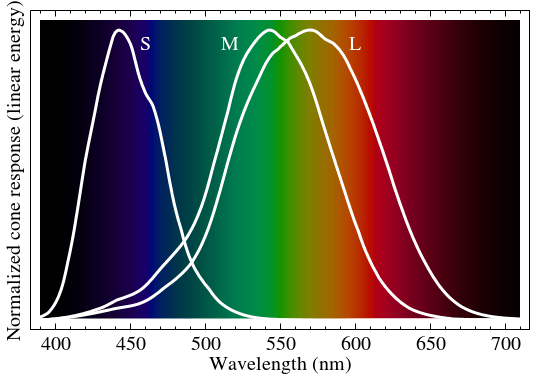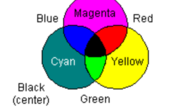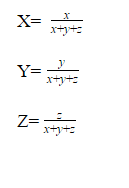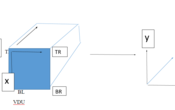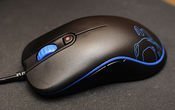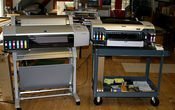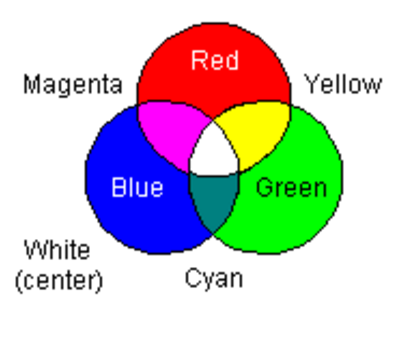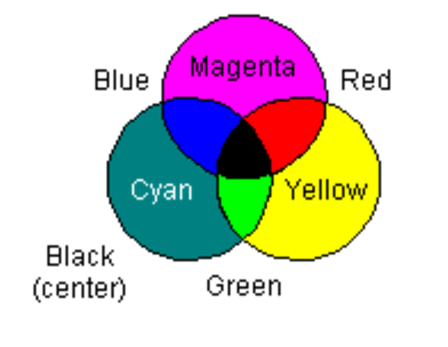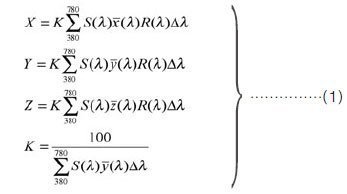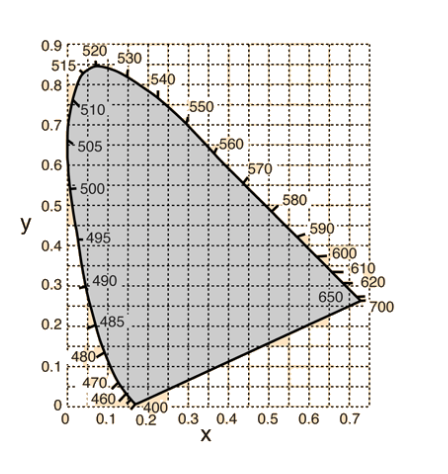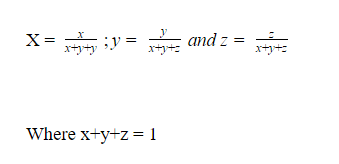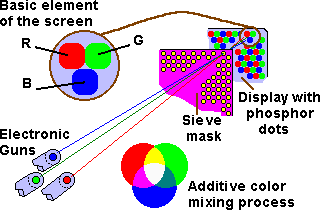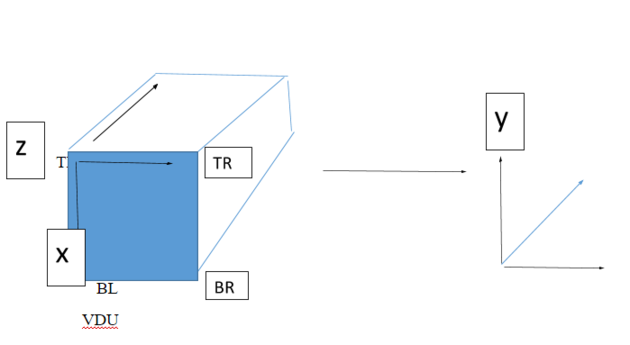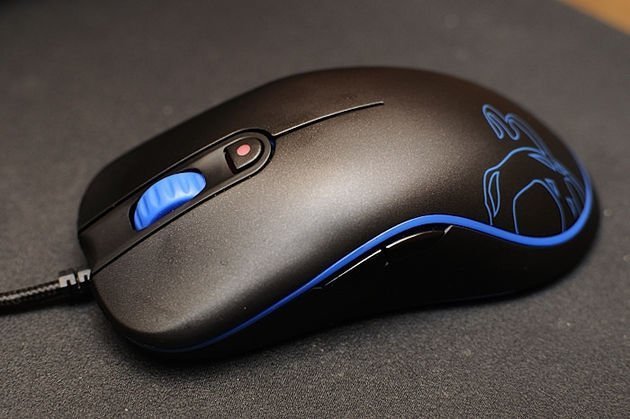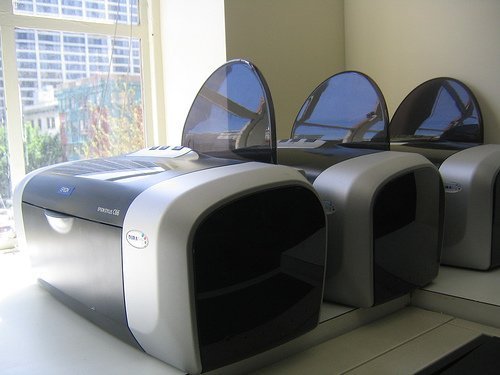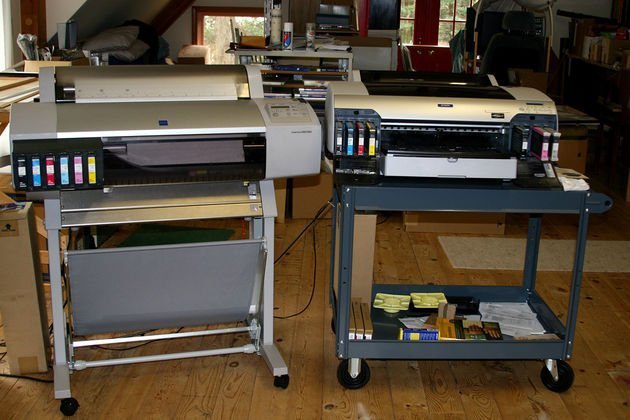Computer Graphics
Edited by Jen Moreau
COMPUTER GRAPHICS
Computer Graphic is the use of a computer to design, store, manipulate, interrogate and present pictorial output. The picture might be an engineered drawing, the work of an artist, photographer or as a scanned image in a hospital lab. Hence, the end product of any computer graphics is a picture.
COLOR:
The color is stimulated in the sensors of the eye and interpreted by the brain, given as illumination from a light source. Color sensitivity, perception and distinction varies. From one human to another. An object may appear red to one observer but dark red or light red to another observe. So the subject of color lacks exaction because of physical/psychological dimensions.
Natural light comes from electromagnetic radiation during rainbows, the visible portion of this spectrum may often be observed. It has between 380-7550 mm wavelength.
R " Red " 750 mm
O " Orange
Y " Yellow
G " Green
B " Blue
I " Indigo
V " Violet
RETINA:
The (retina) is located in the eye and has a sensor that interprets incident light energy. These key sensors are referred to as the S, M and L cones where this refers to the sensitivity of the sensors to short wavelength, medium, and long wavelength.
A light source is said to be achromatic if it comprises in equal weight, all the wavelengths of the visible spectrum. An achromatic light source appears white. When an object reflects achromatic light about 80%, that object appears white. Conversely, if most of the incident light energy is absorbed with less than 3% reflection, the object appears black.
A light source is said to be chromatic if it contains the wavelength of the visible spectrum in arbitrarily unequal proportions. The color of the light source wound depends on the dominant wavelength. A monochromatic light source consists of a single wavelength.
TRISTIMULUS VALUE:
This refers to the three values of the wavelengths in a light spectrum. The value can be represented in SML space. The human eye has three kinds of cone cells which sense light with spectral sensitivity in short (S), medium (M), and long (L) wavelengths the three parameters noted S, M, L can be illustrated using a 3-dimension space call LMS color space.
THEORY OF COLOR
As can be seen from the diagram monochromatic colors, blue, green and red, representing S, M, L respectively are key in color perception. Hence, the theory of Trichromacy is based on the work of eminent scientists to the effect any color can be generated from three light sources. Hence, the emergence of Red, Green, and Blue as primary colors.
GREEN + BLUE = CYAN
RED + BLUE = MAGENTA RED + GREEN = YELLOW RED + GREEN + BLUE = WHITE
Additive color mixing is the technology of cathode Ray Tube (CRT)N and other display devices in the word of graphics. However, when it comes to printing, the technology is based on subtractive color process. This involves ink, dyes and other colorants.
A complement is white minus the color. Therefore, the complement of yellow is blue, a complement of cyan is red and complement of Green is magenta. Additive color mixing is based on RGB while subtractive technology rests on Cyan, Magenta, and Yellow.
RED = Y + M
BLUE = C + M GREEN = Y + C BLACK = Y + C + M
COLOR SPACE
Color can be visualized in a coordinate space. This is ideal for mathematical representation ad interpretation of color. There are two main coordinate systems: hue, saturation and lighten (HLS) and Red, Green, Blue (RGB) Co-ordinate system.
Hue is defined as the dominant wavelength of the light source, hue is measured anti-clockwise from 0-360.
Saturation is the degree of purity or vividness of the color. For instance, while light can dilute color reducing the saturation level. It is measured in the range of 0-100%
Lightness is the degree of brightness, it is also a measure of illumination. It ranges from black to white.
Color space is a specific organization of colors. In combination with physical device profiling, it allows for reproducible representation of in both analog and digital representations in color space, there two main coordinate system (1) HLS (2) RGB
RGB SYSTEM
The origin of three-dimensional RGB color space is based on the three stimulus sensor cones of the retina. Plotting each component along orthogonal axis create tristimulus space
Hence Give this equation, any two-dimensional projection can also be used to describe any color. For instance, Such projections are known as chromaticity diagrams. Below where r and b are the coordinates;
Chromaticity is an objective specification of the quality of color regardless of luminance. Chromaticity consist of two independent parameters, often specified as hue (h) and colorfulness (s) where the latter is alternatively called saturation. The chromaticity coordinates or values are;
THE CIE STANDARD
In order to eradicate the shortcomings of the proposed RGB system based on natural stimulus functions, the CIE implement a new standard. This is known as the standard tristimulus observer functions.
It is based on hypothetical primaries X, Y, Z. the color space accommodates the entire spectrum. The coordinate values are:
GRAPHIC HARDWARE
For a computer graphics to work, it requires some specialized hardware that is purposely designed for the purpose of either displaying series of images (pictures) or out printing in hard copy e.g. Monitor screen or Printer.
GRAPHIC DISPLAY
We have the variety of this today, ranging from the Old CRT (Cathode Ray Tube) to the modern day LCD, Plasma etc. The technology employed in the making of these Graphic display can be divided into three type:
- 1Raster ScanAdvertisement
- 2Stroke and Refresh
- 3Direct view Storage tube.
STROKE-REFRESH DISPLAY
This is one of the earliest technology, electrons are attracted towards the positively charged cathode, and the graphics drawn will only remain on the screen for a very short period of time. And this is due to the phosphor coating.
There are basically two important elements (1) DISPLAY BUFFER (2) DISPLAY CONTROLLER
Display butter: this is a database file, structured for easy access and interpretation that holds in computer memory all the information required draw the picture.
Display Controller: it has the function to cycle through the butter at refresh rate to sustain the picture without flicker. The signal data is passed on to the vector/character generator and onto the screen.
Limitation: It is obvious that the complexity % the displayed picture is limited by the size of the displayed butter: the greater the size of the butter, the more vectors it can hold. Another limitation is imposed by the speed of the controller. It also is the speed of picture processing during transformation, clipping and text generation.
Advantages: the first main advantage is that the displayed is vector oriented. Thus, a line can be know from any addressable point to another directly. The second advantage is the option of dynamic motion displays. This is made possible by the very short persistence phosphor. Thus, in between the display butter and displayed controller, during the refresh cycle, the image data can be transformed, resulting in dynamic motion or animation.
Direct-view Storage Tube (DUST): this operates like the calligraphic system above, but has long persistence phosphor that can last up to 1 hour the image is stored on the screen so that little or more processing is required. However, the extended screen is erased at once, not individual elements. Furthermore, only two colors, at most can be displayed. Also, no animation is possible.
Raster Scan Technology
Raster Scan technology has evolved over the means and is now the steady mode of display for most computer systems. In a contest to the other methods, it is a point plotting device, rather than vector or like plotting system.
A raster CRT graphics device can be converted a matrix of discrete cells each of which can be it or made digit in order to define a picture.
In electronic, this tantamount to setting each fixed in memory to tie 1 or zero. As can be observed, the like AB is not directly drawn. Lasted, it proceeds point so that we have a zig-zag type of line known aliased. In hardware, this is corrected with Digital Differential Analyzer Algorithm to obtain an initialized line as above.
Memory Maps are important I Raster scan displays. A drawing rasterized to memory. It is to form a memory map.
FRAME BUFFERS
The frame buffer is memory maps that define computer memory for the picture. It varies in size to the resolution of the screen to the image size. The frame buffer known the previous page can hold only black and white information. This is known as a one-bit plane. Shades of gray are not possible. However, more shades or color can be added by increasing the number of bit planes.
Let N = 3, so that there are up to 23 = 8 color shades available. Collecting the bits is the 3 planes for a particular fixed, we have 01.0. This is a decimal conversion in 2 and the output from the raster. It is used as an index into the look-up table, where W>N, such that 2N Colors can be powered at a time out of a total of 2W interaction.
The output from the table is 1010 which is a decimal and has a decimal value of 10. It is fed into the DAC, digital to analog converter to generate a color display in the CRT.
If W = 4, 24 =16; w is greater than n
The basic frame buffer can be extended to out-bit color buffer as known above each of the primary colors, Red, Green, and Blue have 0-bit memory buffer. So there are 256 shades of each of Red, Green, and Blue. In total, 224 or 256 x 256 x 256=17 million colors. Where there is a look-up table of saying w = 10, then a palette of up 1 billion is available.
The Red, Green and Blue are additive colors. RGB values in an 8-bit size range from 0-255. So RGB(0,0,0) is black and RGB (255,255,255) is white. Above, the color frames reduce to RGB values of 10,172 and 75. They are passed through the 8-bit DAC and respective color guns to display the color of the pixel 6/ 28.28.28 = 2w = 17million
DEVICE COORDINATE SYSTEM
Images in a computer system are defined by a point in a coordinate system. Points lead to line definition. For example, P1(X1 Y1) and P2(X2, Y2) may be used to refires alike P1, P2. Similarly P1,P2,P3,P4,P5 define a polyline while P1,P2,P3,P4,P5 define a polygon. It is important to properly understand device coordinate system.
In the VDU system, the origin is at the top-left corner of the screen. X -" axis is to the right while Y -" axis is downwards. This is in line with the way the cursor move on the screen. Similarly, the top of the page is at the top of the screen and as one moves down the screen the scroll indicates the increase in the y-axis.
In science and engineering, it is usually more desirable to plot graphs and drawings with proper orientation. This is possible in many graphic packages by orientation option to change the origin of the drawing.
INTERACTIVE DEVICES
The interactive device allows communication with the computer through application software. Examples includes mouse digitizer and other pointing devices The mouse is now indispensable and works with the keyboard to achieve full interaction with the computer when a mouse is pressed, the position of the cursor is passed to processing software and actions such selection is taken.
The digitalis is used to convert vector drawings to digital format. For instance, consider a line AB it can be defined by 5 coordinate positions. Hence using a digitalised the coordinate of the five-point are obtained in device coordinate and the processing software then reproduces the original line in computers system.
Other input interactive devices include simulators for piloting an aircraft, motor racing, and other games.
PRINTER
It is the desire to obtain hardcopy output for any graphic work. A basic knowledge of printer technology would be helpful is based on addictive colors RGB printing is based on subtractive technology, CYMK. There are therefore at least 2 print heads one for a lack and the other for color. In advanced high-end, printers may have as many print heads as possible.
INK JET
Modern printing is in the most case based ink-jet technology. There are two type: thermal jet or bubble jet, and piezo technology. Both systems are top on demand printer and differ only in ink mixing systems. Thermal jet technology
Is based on rapid alternate heating and cooling of a small thermal element. This heating element is hit on directly next to the effect of creating a gas bubble which forces trapped ink out of the opening as droplets thus forming the image.
Referencing this Article
If you need to reference this article in your work, you can copy-paste the following depending on your required format:
APA (American Psychological Association)
Computer Graphics. (2017). In ScienceAid. Retrieved Apr 19, 2024, from https://scienceaid.net/Computer_Graphics
MLA (Modern Language Association) "Computer Graphics." ScienceAid, scienceaid.net/Computer_Graphics Accessed 19 Apr 2024.
Chicago / Turabian ScienceAid.net. "Computer Graphics." Accessed Apr 19, 2024. https://scienceaid.net/Computer_Graphics.
If you have problems with any of the steps in this article, please ask a question for more help, or post in the comments section below.
Comments
Article Info
Categories : Computer Science
